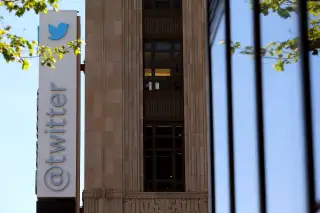Why Everyone Should Relax About the Twitter Layoffs

Tuesday's news that Twitter was laying off 8% of its workforce reverberated across the Internet, dominating the headlines, newsfeeds, and of course Twitter itself. But it really shouldn't have. It wasn't a big surprise, and it's not that big a deal. Here's why.
Twitter has a big cultural footprint...
If we use Google News mentions as a metric, around 158 million results come up when you search "Twitter." Facebook gets a little less at 148 million, and Instagram and Snapchat lag back at 49 million and 5 million, respectively. So if you were to judge Twitter by how often the media depicts it, it's even bigger than Facebook. On Tuesday, when the layoffs were announced, Google News counted 604 articles before 3 p.m.
…but only a fraction of Facebook's user base.
To start with, Facebook has upwards of 1.49 billion active monthly users, dwarfing Twitter's 316 million. But the attitudes users take to each platform are vastly different. For most people Facebook is a private and inward-facing network, based on sharing things with "friends"—which is why the default privacy setting for user-posted content is "friends." Though Twitter may have begun as a personal mini-blog replete with updates about users' personal life, it quickly evolved to become a more impersonal, professional tool, more like LinkedIn than Facebook. For many people, it's the public face of their "personal brand"—which is why many people, like this Guardian writer, stopped posting pictures of mountain bikes on the medium and stuck to their job description and professional news. This focus—plus its strictly chronological structure—means that people aren't nearly as engaged on Twitter as they are on Facebook. Although both are filled to the brim with people sharing articles, Facebook drives 20 times more traffic to articles, though it has only about five times as many users.
The exceptions to this rule—the times when people are more likely to turn to Twitter than to Facebook—are when there's a breaking news event. (Or when Facebook, Google, or Instagram goes down, which is a kind of breaking news.) The reason? Twitter delivers information in reverse chronological order, so users can easily and quickly get the latest information from anyone using the network—friends or not.
Twitter doesn't employ a lot of people...
Based on the headlines about its "global" workforce, you might not realize that Twitter is a medium-sized Internet company employing only about 4,000 people and that layoffs will directly affect, as the company confirmed to Fortune, only about 336 workers. This happens all the time on a larger scale without a media explosion. Did you hear about the 500 HealthPlus workers laid off in Detroit this summer? No, of course you didn't. The Twitter engineer who found out he was laid off on Twitter certainly deserves our sympathy, but compared to a laid off autoworker in Michigan, his job prospects are good. And Tuesday's news definitely won't have an impact on the unemployment rate.
…or make any money.
That's right: Despite its status as a household name, Twitter doesn't make money. In fact, it's been losing money at a faster and faster rate over the past few years. In 2014, the company hemorrhaged $577.8 million. Meanwhile, Facebook made $2.94 billion. After the announcement, Twitter's stock price rose 5%, suggesting that despite its relatively small payroll, investors thought Twitter had grown a little bloated. This isn't unreasonable: Facebook's revenue and profits dwarf Twitter's by orders of magnitude, yet its workforce is only about twice as large.